Aug 10, 2023 Enjoy it with plain roti, naan or over some jeera rice. It is 100% YUM either way!
Saag Paneer
Paneer is one such ingredient that’s hard to miss when you talk about Indian food. From curries, to breads, sweets and so much more, we use it all the time. One of the most popular paneer recipes happens to be one made with leafy greens. Saag Paneer is a great way to consume those healthy greens and make them a part of your diet. You can use any greens you want for this recipe but the most common ones are spinach and mustard greens (also called sarson in Hindi).
Palak Paneer vs Saag Paneer
The fact is that growing up in Delhi, I was familiar with palak paneer and saag but not saag paneer. It was not a term that we commonly used in our home. Mom made palak paneer and made saag ( sarson ka saag during winters) but never saag paneer. The difference between saag paneer and palak paneer lies in the greens that are used in the recipe. Generally when we say saag, we mean mixed greens. If you say “palak”, it only means spinach.
Ingredients for Saag Paneer
Leafy greens: choose the greens that are most easily available to you. Do not make with 100% mustard greens as that can be bitter. Spinach has a mild flavor and it is the reason why we mostly use it while making saag. Collard, turnip, swiss chard, kale can all be used to make saag. Saag usually refers to mixed greens which primarily includes mustard greens (sarson) and spinach. It can also include other greens like methi (fenugreek), bathua, kale etc. So saag paneer can be made with mixed green or with spinach only as well. Paneer: homemade is best but you can also get one from Indian grocery stores. Soak the paneer in warm water for 20 minutes before using it in the recipe. It makes the flavor better. Spices: I don’t like using a ton of spices in this saag paneer recipe other than coriander, turmeric, garam masala and a bit of chili powder for the heat. Most of the flavor in the saag comes from the greens and it should be that way in my opinion. Cashews: the purpose of cashews in this recipe is to thicken the saag and make it creamy. You can use almonds as well. If you don’t want to use nuts, that’s fine as well. You might add some heavy cream or coconut milk at the end in that case.
How to Make Saag Paneer
Stovetop Instructions for Saag Paneer
If you want to make this recipe in a pan on stovetop. Start by heating ghee and oil in a pan on medium heat. Add the ginger, garlic, green chili and cashews and cook for 1 minute until ginger garlic change color. Then add the onions and cook 2 minutes. Add chopped tomato and the greens and mix until the leaves wilt. Then add the spices (except garam masala) and salt and 1 cup of water. Cover the pan with a lid and let the mixture cook for 20 minutes on medium heat. You may need to add more water if all the water evaporates. Then use an immersion blender to puree the saag. Add more water as required to adjust the consistency of saag to preference. Add paneer and let it simmer for 5 more minutes. Finish with garam masala and serve hot.
Fry The Paneer For More Flavor
A lot of restaurants fry the paneer for saag paneer or palak paneer before adding it to the recipe. I am personally not a fan of frying my paneer. I like adding soft paneer straight to the recipes. However, if you want to fry, heat some oil in a pan on medium heat. Then add the paneer cubes and fry until golden brown from both sides (flip the cubes once in between). Place the fried paneer cubes in a bowl filled with warm water for 10 minutes. Then squeeze water out of the cubes and then add to the recipe. This will keep the cubes soft and not turn the paneer chewy.
Making it With Only Spinach
If you can’t find mustard greens and want to make saag paneer with only spinach, you can of course do that. However that will then be palak paneer and not saag paneer. If you want to make this recipe with just spinach, use 500 grams of spinach in the recipe.
Vegan Variation
You can easily make a vegan version of this saag paneer recipe. All you have to do is to replace the paneer with extra-firm tofu and the ghee with oil. The rest of the recipe remains the same. You can add some coconut milk at the end if you like and you can also fry the tofu before adding it to the gravy.
Useful Tips
To make the saag paneer even creamier, you can add some heavy cream at the very end. Keep in mind that the saag is already thick and creamy from the cashews so it might not be needed. If you wish, you can add an additional tadka at the end, like I did in my sarson ka saag recipe. You can heat some ghee and sauté some chopped garlic and pour that over the saag paneer before serving. You can also top it with some butter before serving. Homemade white makhan (white butter) would be even better! To make this recipe gluten free, skip the hing (asafetida) or use gluten free hing. Other leafy greens that can be used to make saag: collard greens, swiss chard, kale, fenugreek. If you can’t find mustard greens, it will be a good idea to use 50% spinach and 50% remaining greens. This recipe is more homestyle and doesn’t use lots of spices or cream. If you want, you can definitely use whole spices like cumin seeds, bay leaf, cardamom etc. Sauté them before adding the ginger-garlic.
Instant Pot Butter Paneer + Video
Instant Pot Paneer Biryani
Paneer & Veggies in Peanut Sauce
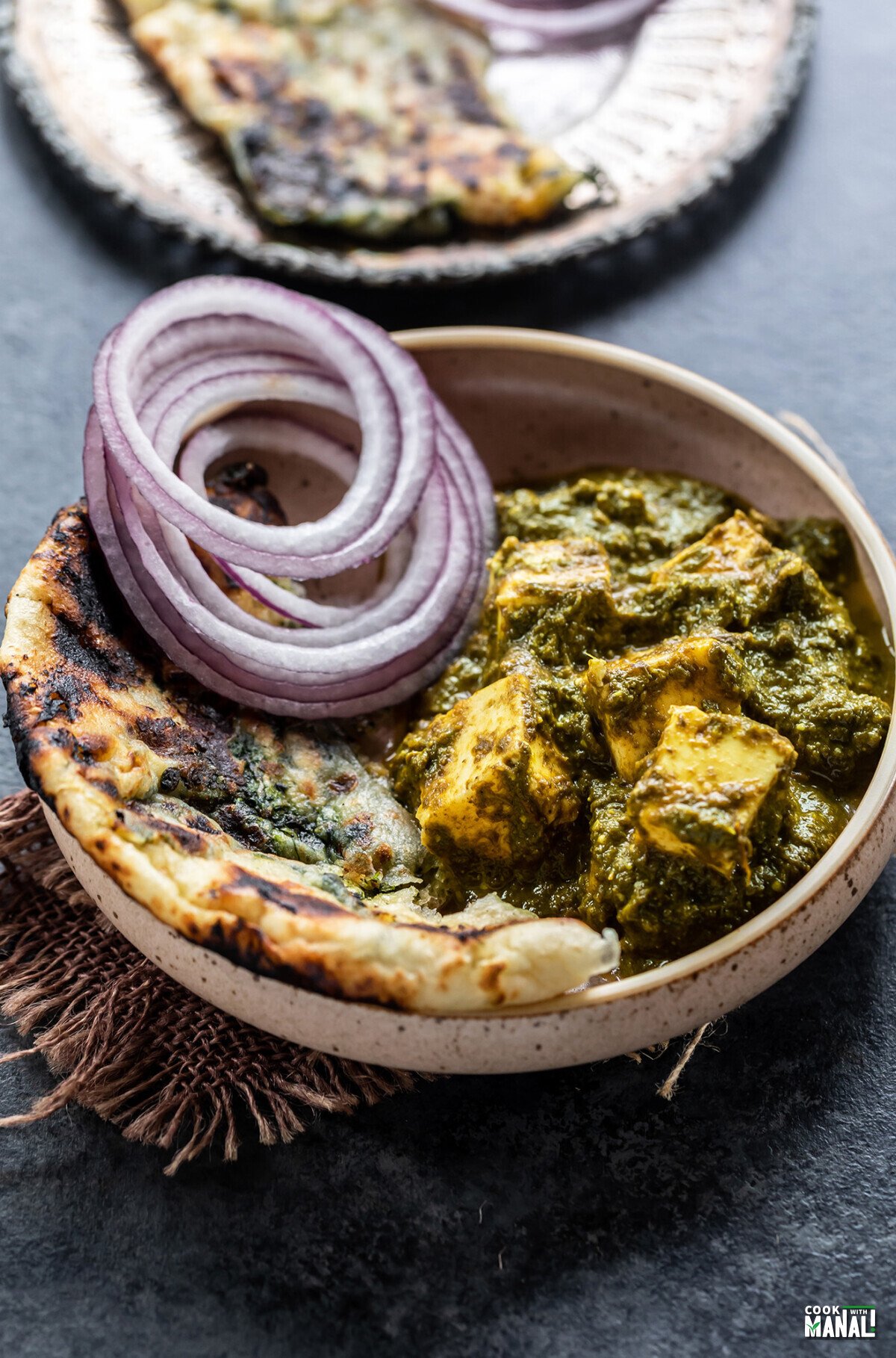
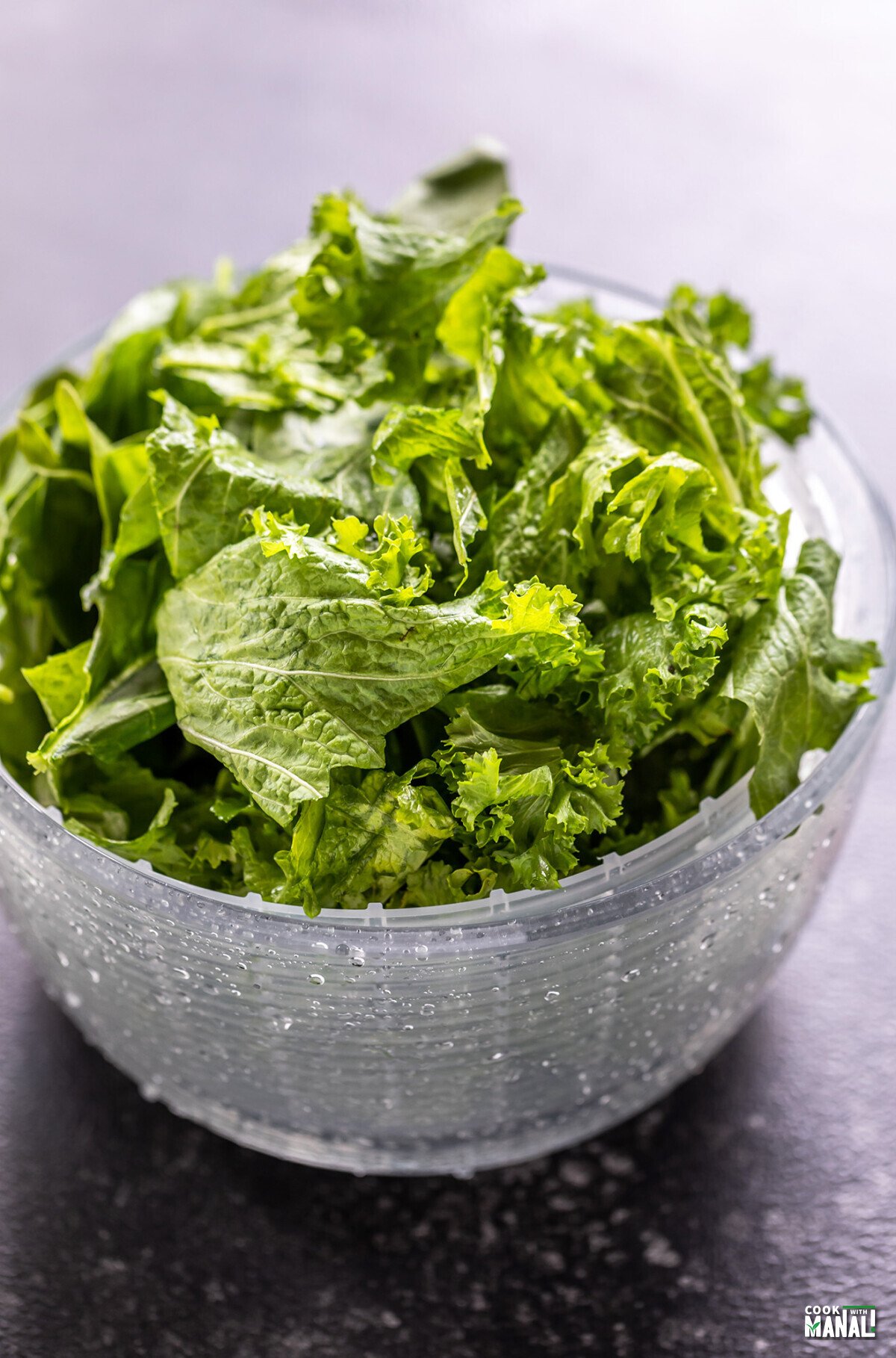
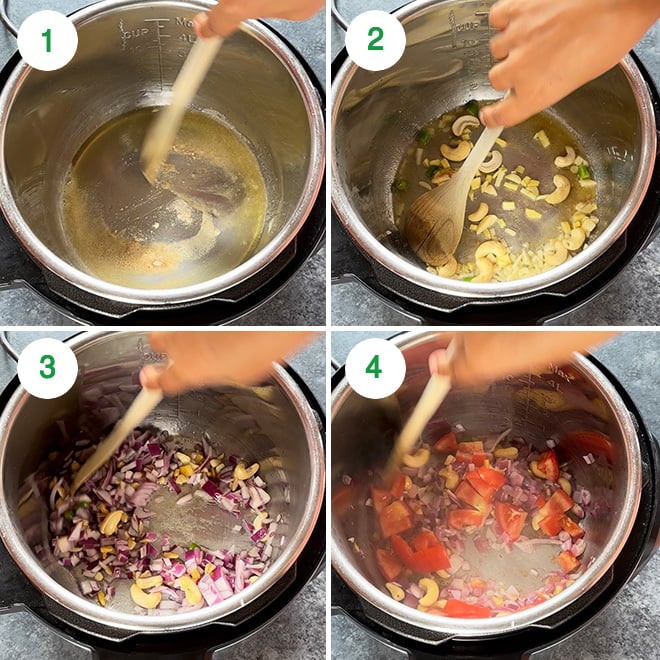
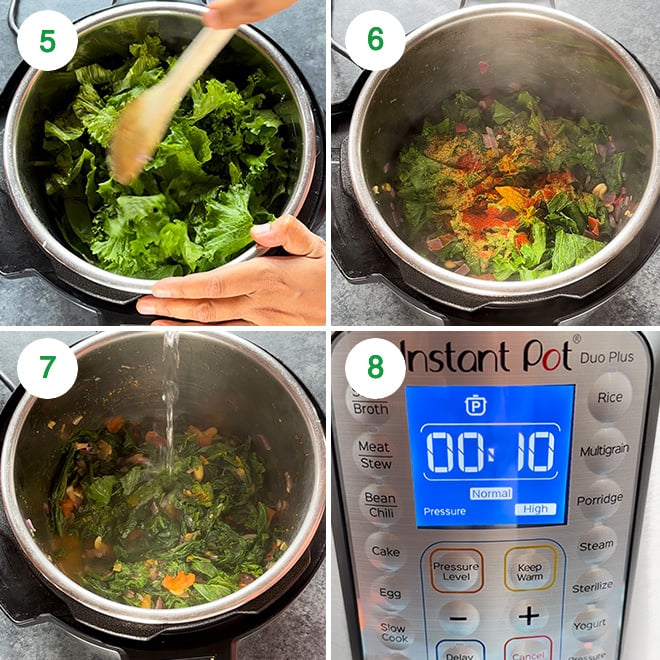
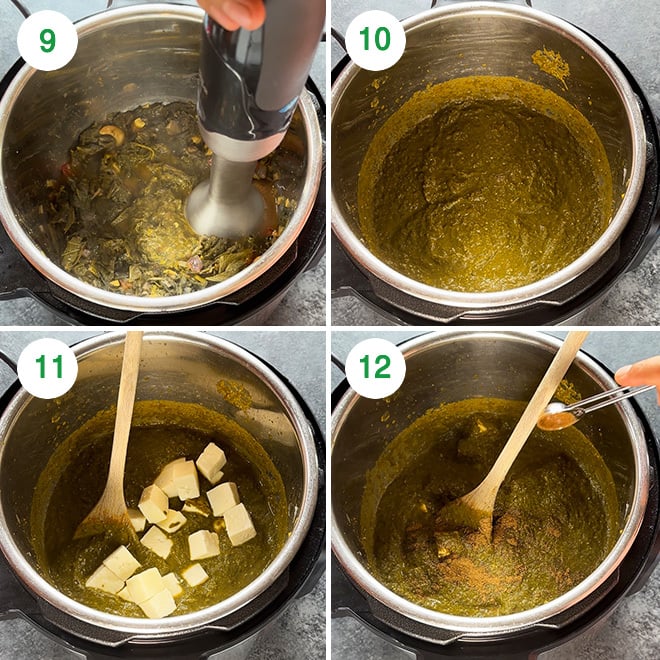
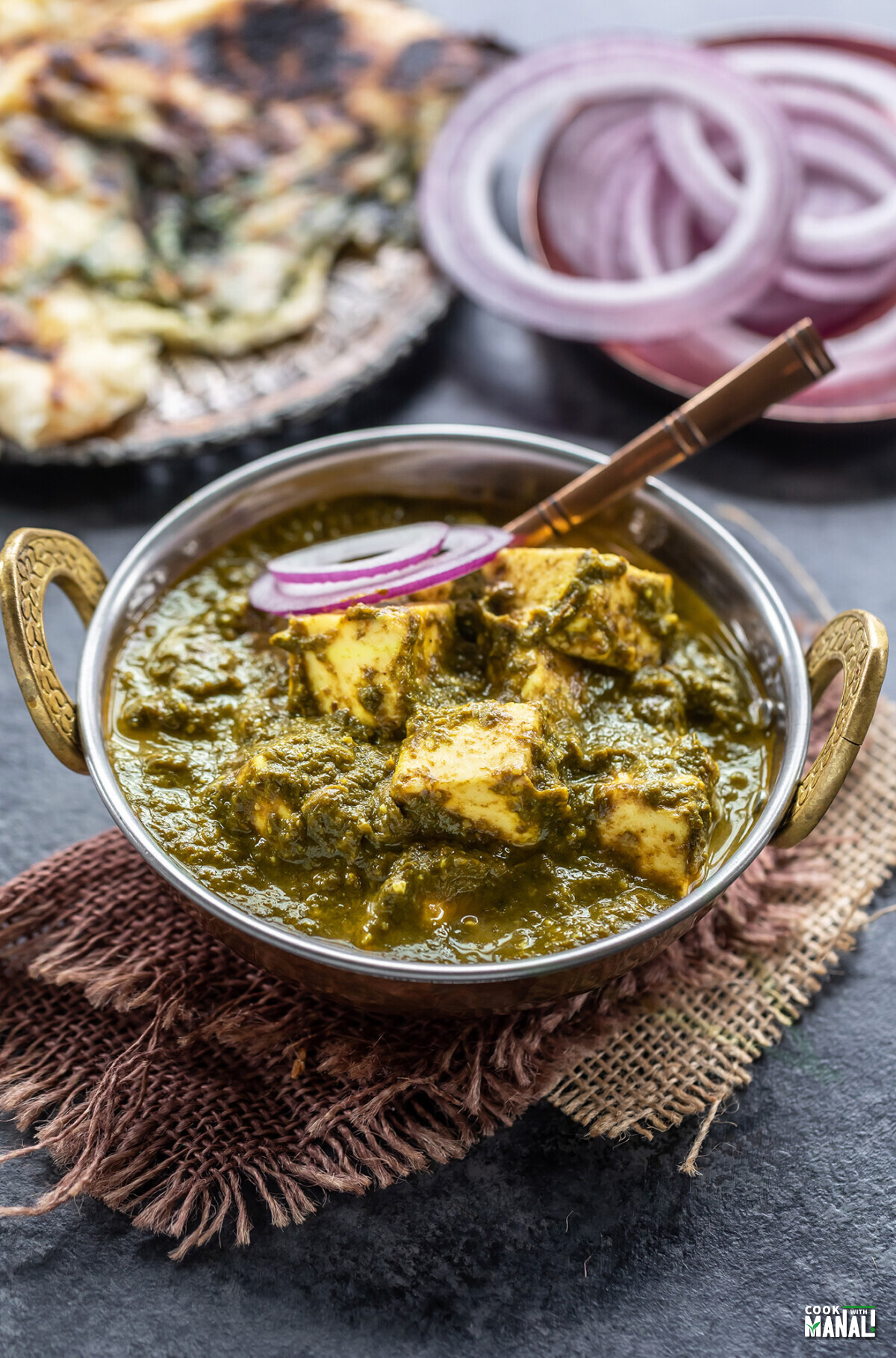
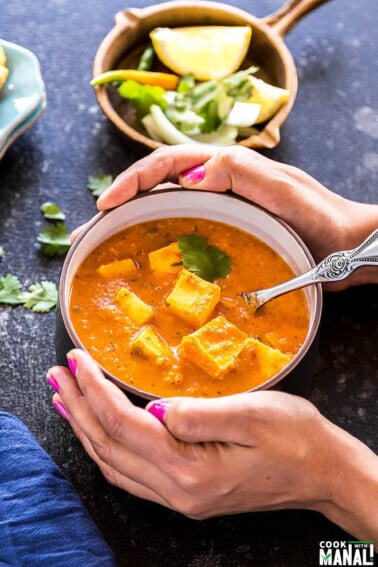

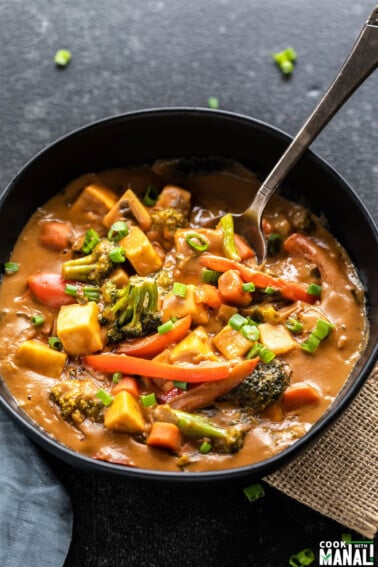
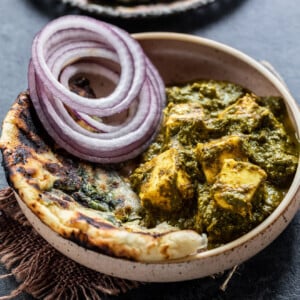
title: “Saag Paneer Recipe Instant Pot Stovetop " ShowToc: true date: “2024-09-05” author: “Joan Watson”
Aug 10, 2023 Enjoy it with plain roti, naan or over some jeera rice. It is 100% YUM either way!
Saag Paneer
Paneer is one such ingredient that’s hard to miss when you talk about Indian food. From curries, to breads, sweets and so much more, we use it all the time. One of the most popular paneer recipes happens to be one made with leafy greens. Saag Paneer is a great way to consume those healthy greens and make them a part of your diet. You can use any greens you want for this recipe but the most common ones are spinach and mustard greens (also called sarson in Hindi).
Palak Paneer vs Saag Paneer
The fact is that growing up in Delhi, I was familiar with palak paneer and saag but not saag paneer. It was not a term that we commonly used in our home. Mom made palak paneer and made saag ( sarson ka saag during winters) but never saag paneer. The difference between saag paneer and palak paneer lies in the greens that are used in the recipe. Generally when we say saag, we mean mixed greens. If you say “palak”, it only means spinach.
Ingredients for Saag Paneer
Leafy greens: choose the greens that are most easily available to you. Do not make with 100% mustard greens as that can be bitter. Spinach has a mild flavor and it is the reason why we mostly use it while making saag. Collard, turnip, swiss chard, kale can all be used to make saag. Saag usually refers to mixed greens which primarily includes mustard greens (sarson) and spinach. It can also include other greens like methi (fenugreek), bathua, kale etc. So saag paneer can be made with mixed green or with spinach only as well. Paneer: homemade is best but you can also get one from Indian grocery stores. Soak the paneer in warm water for 20 minutes before using it in the recipe. It makes the flavor better. Spices: I don’t like using a ton of spices in this saag paneer recipe other than coriander, turmeric, garam masala and a bit of chili powder for the heat. Most of the flavor in the saag comes from the greens and it should be that way in my opinion. Cashews: the purpose of cashews in this recipe is to thicken the saag and make it creamy. You can use almonds as well. If you don’t want to use nuts, that’s fine as well. You might add some heavy cream or coconut milk at the end in that case.
How to Make Saag Paneer
Stovetop Instructions for Saag Paneer
If you want to make this recipe in a pan on stovetop. Start by heating ghee and oil in a pan on medium heat. Add the ginger, garlic, green chili and cashews and cook for 1 minute until ginger garlic change color. Then add the onions and cook 2 minutes. Add chopped tomato and the greens and mix until the leaves wilt. Then add the spices (except garam masala) and salt and 1 cup of water. Cover the pan with a lid and let the mixture cook for 20 minutes on medium heat. You may need to add more water if all the water evaporates. Then use an immersion blender to puree the saag. Add more water as required to adjust the consistency of saag to preference. Add paneer and let it simmer for 5 more minutes. Finish with garam masala and serve hot.
Fry The Paneer For More Flavor
A lot of restaurants fry the paneer for saag paneer or palak paneer before adding it to the recipe. I am personally not a fan of frying my paneer. I like adding soft paneer straight to the recipes. However, if you want to fry, heat some oil in a pan on medium heat. Then add the paneer cubes and fry until golden brown from both sides (flip the cubes once in between). Place the fried paneer cubes in a bowl filled with warm water for 10 minutes. Then squeeze water out of the cubes and then add to the recipe. This will keep the cubes soft and not turn the paneer chewy.
Making it With Only Spinach
If you can’t find mustard greens and want to make saag paneer with only spinach, you can of course do that. However that will then be palak paneer and not saag paneer. If you want to make this recipe with just spinach, use 500 grams of spinach in the recipe.
Vegan Variation
You can easily make a vegan version of this saag paneer recipe. All you have to do is to replace the paneer with extra-firm tofu and the ghee with oil. The rest of the recipe remains the same. You can add some coconut milk at the end if you like and you can also fry the tofu before adding it to the gravy.
Useful Tips
To make the saag paneer even creamier, you can add some heavy cream at the very end. Keep in mind that the saag is already thick and creamy from the cashews so it might not be needed. If you wish, you can add an additional tadka at the end, like I did in my sarson ka saag recipe. You can heat some ghee and sauté some chopped garlic and pour that over the saag paneer before serving. You can also top it with some butter before serving. Homemade white makhan (white butter) would be even better! To make this recipe gluten free, skip the hing (asafetida) or use gluten free hing. Other leafy greens that can be used to make saag: collard greens, swiss chard, kale, fenugreek. If you can’t find mustard greens, it will be a good idea to use 50% spinach and 50% remaining greens. This recipe is more homestyle and doesn’t use lots of spices or cream. If you want, you can definitely use whole spices like cumin seeds, bay leaf, cardamom etc. Sauté them before adding the ginger-garlic.
Instant Pot Butter Paneer + Video
Instant Pot Paneer Biryani
Paneer & Veggies in Peanut Sauce









